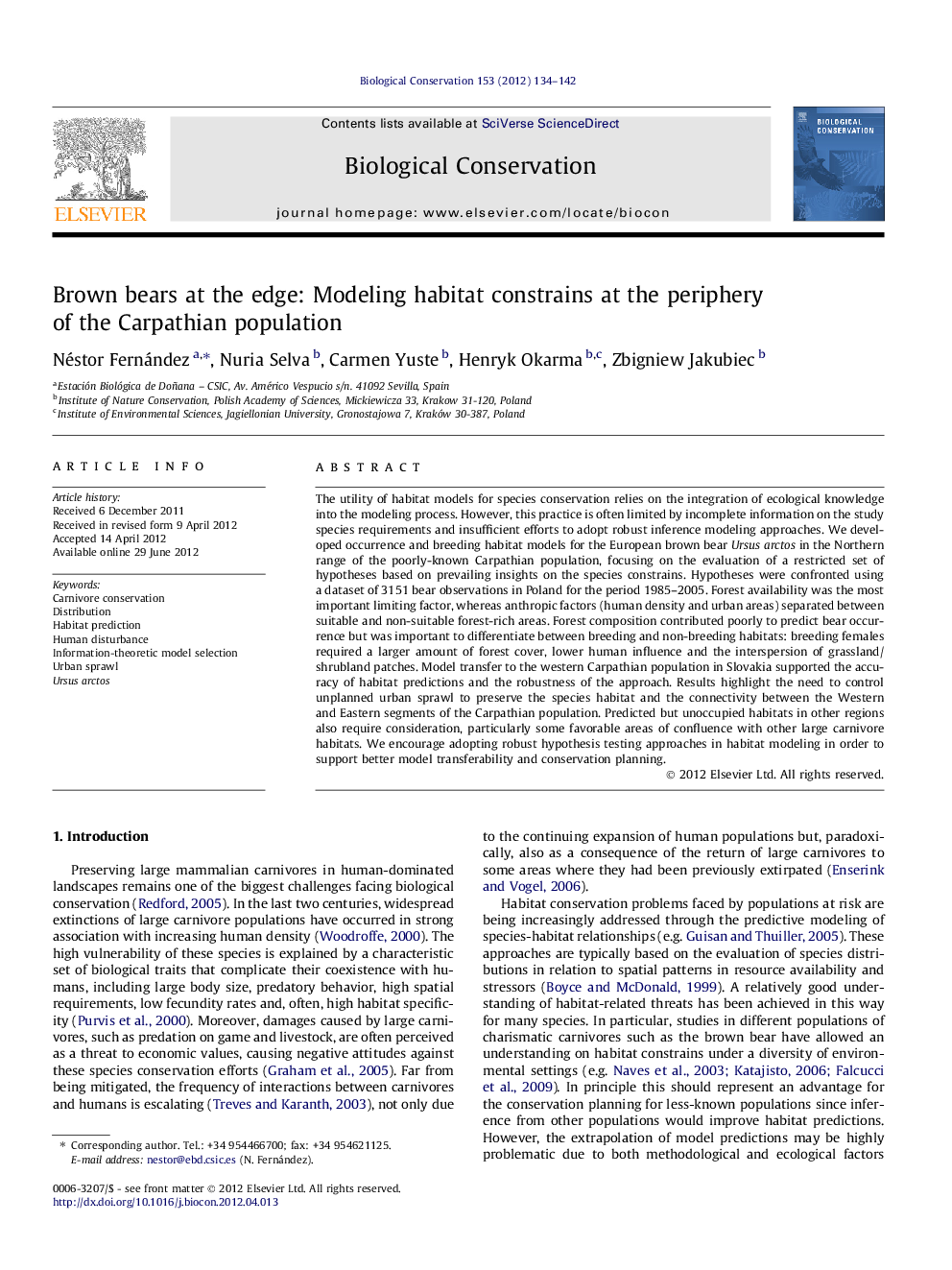| کد مقاله | کد نشریه | سال انتشار | مقاله انگلیسی | نسخه تمام متن |
|---|---|---|---|---|
| 6301139 | 1617948 | 2012 | 9 صفحه PDF | دانلود رایگان |
عنوان انگلیسی مقاله ISI
Brown bears at the edge: Modeling habitat constrains at the periphery of the Carpathian population
دانلود مقاله + سفارش ترجمه
دانلود مقاله ISI انگلیسی
رایگان برای ایرانیان
کلمات کلیدی
موضوعات مرتبط
علوم زیستی و بیوفناوری
علوم کشاورزی و بیولوژیک
بوم شناسی، تکامل، رفتار و سامانه شناسی
پیش نمایش صفحه اول مقاله

چکیده انگلیسی
The utility of habitat models for species conservation relies on the integration of ecological knowledge into the modeling process. However, this practice is often limited by incomplete information on the study species requirements and insufficient efforts to adopt robust inference modeling approaches. We developed occurrence and breeding habitat models for the European brown bear Ursus arctos in the Northern range of the poorly-known Carpathian population, focusing on the evaluation of a restricted set of hypotheses based on prevailing insights on the species constrains. Hypotheses were confronted using a dataset of 3151 bear observations in Poland for the period 1985-2005. Forest availability was the most important limiting factor, whereas anthropic factors (human density and urban areas) separated between suitable and non-suitable forest-rich areas. Forest composition contributed poorly to predict bear occurrence but was important to differentiate between breeding and non-breeding habitats: breeding females required a larger amount of forest cover, lower human influence and the interspersion of grassland/shrubland patches. Model transfer to the western Carpathian population in Slovakia supported the accuracy of habitat predictions and the robustness of the approach. Results highlight the need to control unplanned urban sprawl to preserve the species habitat and the connectivity between the Western and Eastern segments of the Carpathian population. Predicted but unoccupied habitats in other regions also require consideration, particularly some favorable areas of confluence with other large carnivore habitats. We encourage adopting robust hypothesis testing approaches in habitat modeling in order to support better model transferability and conservation planning.
ناشر
Database: Elsevier - ScienceDirect (ساینس دایرکت)
Journal: Biological Conservation - Volume 153, September 2012, Pages 134-142
Journal: Biological Conservation - Volume 153, September 2012, Pages 134-142
نویسندگان
Néstor Fernández, Nuria Selva, Carmen Yuste, Henryk Okarma, Zbigniew Jakubiec,